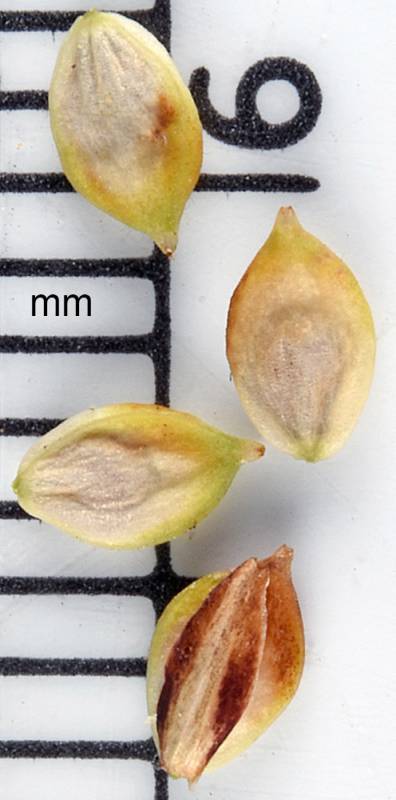Hosted by the University of Washington Herbarium, Burke Museum
Publication: Kongl. Vetensk. Acad. Nya Handl. 24: 165. 1803.
Origin: Native
Herbarium search: CPNWH
Notes: FNA23: "Carex aquatilis is circumboreal and variable; four extensively intergrading varieties are recognized in North America. The species is distinguished by amphistomic (epistomic in var. dives) papillose leaves, glabrous sheaths with a concave apex, perigynia that lack veins and are usually brown-spotted on the proximal half, and have glossy achenes.
The circumboreal Carex aquatilis var. aquatilis is very common in wetlands of the northern and montane portions of North America. The plants are usually rhizomatous; in very wet or flooded sites they may form cespitose clumps.
Carex aquatilis var. aquatilis is distinguished from the sympatric Carex stricta by the sheaths not ladder-fibrillose, obovoid and veinless perigynia that are rounded at apex, glossy achenes, and amphistomic leaves. It is often confused with C. emoryi, and distinguished by perigynia that lack veins, concave sheath apex, glossy achenes, and amphistomic leaves. In western North America, it is often sympatric with C. scopulorum and may be distinguished by the pale brown perigynia, glossy achenes, and amphistomic leaves.
Carex aquatilis and C. scopulorum occasionally hybridize; hybrids have been named as C. ×sphacelata T. Holm and C. ×chionophila T. Holm. Carex aquatilis var. aquatilis overlaps and may intergrade with C. aquatilis var. dives along the Pacific Coast, with var. minor along the Arctic coast, and with var. substricta in the Great Lakes-New England region. Much of var. aquatilis in the southern part of its range has been called var. altior (L. H. Bailey) Rydberg. The type for var. altior is a specimen of C. emoryi."
Last updated 10/26/2023 by David Giblin.

